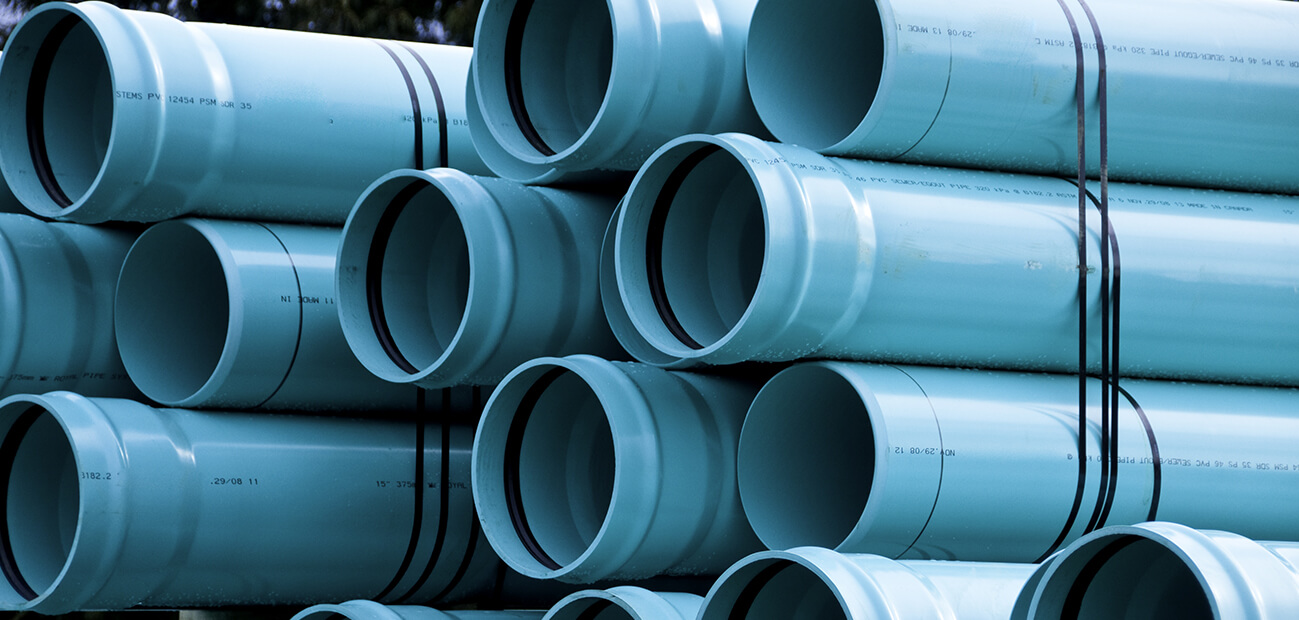
Storage and Handling
Buyer’s Acceptance of Materials
The person responsible for receiving the pipe should always carefully inspect as much of the pipe as possible before unloading. The receiver should look for transportation damage such as a shift in the load, tie-down straps overtightened, or signs of rough treatment. LTL (less than truckload) pipe shipments that arrive in a closed trailer should be checked as soon as the trailer is opened. Make sure that the pipe has not been toploaded with metallic piping, crates, machinery or any other objects that might crush or impact the plastic pipe. The ends of the pipe should be visually inspected for cracks, cuts, gouges, or heavy deformations. In some cases, especially for large diameter pipe 4” and above, it would be advisable to inspect the bore of the pipes for internal cracks or splits that may have occurred as a result of loading or transportation. The use of a strong flashlight may be necessary to inspect the inside diameter beyond the ends of the pipe. Any and all damages should be witnessed by the truck driver and clearly noted on
the transportation documentation with a copy retained by the receiver. The carrier and Eslon should be immediately notified of any damages or missing pipe, or items incorrectly shipped.
Unloading and Handling
After the pipe has been thoroughly inspected and inventoried, it should be unloaded with reasonable careand effort. The person receiving the pipe must decide the means by which the pipe is unloaded and is responsible for any damages that occur during the unloading process. Never push or drag a palletized load of pipe from a truck bed. Pipe should not come into severe contact with sharp objects such as corners of truck beds, loading docks and buildings, forks on forklift trucks, and rocks or other objects on
the ground. Forklift forks must never be inserted into the ends of the pipe as a means of lifting or moving.
Pipe Storage
Indoor storage of pipe is recommended but may not always be convenient. Therefore, when storing pipe outdoors, choose a flat, dry location that will minimize dirt and foreign matter accumulation in the bore and belled end. Palletized pipe should be stacked with wooden pallet bracings touching each other. Stack height will depend on the pipe diameter, the slope of the terrain, and the weather conditions. As a general precaution, palletized pipe should not be stacked higher that eight feet. This should be determined and approved by the site engineer or responsible management official. Loose pipe lengths should be stored in racks or dunnage that will evenly support the pipe to prevent longitudinal sag. If pipe is not well supported, especially in warmer weather, it will become permanently bowed and will be difficult to install. The pipe must be protected from the sun and extreme heat. Protect the pipe by covering it with an opaque tarp, leaving the ends open to allow for air circulation through and around the pipe. When pipe
is not protected from the sun, extended exposure to ultraviolet rays will cause discoloration. The amount of time in years necessary to cause this will vary with the geographic location and the orientation of the pipe to the sun.
Fitting Storage
The person responsible for receiving the fittings should take an accurate count of the incoming order and report any discrepancies to Eslon and the carrier. Fittings packaged in damaged boxes should be closely inspected. Store fittings in their original packaging. If they must be removed from their boxes, separate them by material type (PVC vs. CPVC), geometric configuration, and diameter size. Never combine your plastic fitting inventory with metallic materials. Avoid storing fittings near an open flame or source of extreme heat.

